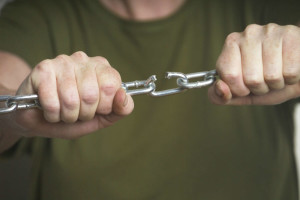
Your website is the digital face of your brand. Your first impression is ever-increasing in importance as buyer behaviour evolves and search becomes the first step in the buying process for many consumers.
This guide explains one simple process that, once completed, will immediately improve your overall customer experience and strengthen the impact of your website.
Improving and maintaining link quality compliments your SEO strategy and leads to an escalation in website traffic, an influx of qualified leads and most importantly – revenue growth.
Step 1: Perfect Your Approach
It all starts with your program.
A quick clean-up may benefit you in the short term, but adopting a “programmatic approach” will lower your overall operations and support costs in the long run.
It is much more cost-effective to find and fix broken links proactively than to rely on consumer feedback.
If a customer comes across a page that does not exist, they are more likely to click away than to contact, inquire or offer feedback on their negative experience.
Waiting to address your broken links results in a high opportunity cost and leaves you with an enormously laborious and expensive clean-up task.
At LinkTiger, we frequently run a benchmark report that puts some of the largest brands to the ultimate broken link test. Our most recent Benchmark Report turned up surprising results. We discovered more than 31,000 broken links on the websites of the 15 largest technology companies listed on the S&P 500. View the full report for free
Step 2: Locate & Fix Your Broken Links
Determining the exact location of your broken links is the first step, and likely the easiest because LinkTiger does it for you. The challenge exists in efficiently fixing the errors once you’ve found them.
Our first valuable piece of advice is to establish your link priority. Not all of the links on your site are equal.
Certain links show up on multiple pages within your site, these are most important as they’re highly likely to be found by visitors. Search engines penalize sites with a high number of broken links, which is why best practise suggests that you find and fix all of the broken links on your site.
Step 3: Choose the Right Tools
Consider selecting a tool that integrates directly into your CMS.
We do have many clients that toggle between their LinkTiger dashboard and their CMS to manually fix errors as they find them, however integration is one more way to ensure a smooth, simple, link-management process. You can also use LinkTiger’s API to integrate with any CMS.
Step 4: Become a Master of Prevention
It is very difficult to prevent link rot, especially if your site is managed by multiple people across different departments.
Human error is the most common cause of broken links. This means that the best and most cost-effective solution is to be proactive in your link-management efforts and implement a tool that is automated, runs frequently (daily, weekly, monthly) and will notify members of your team when an error occurs.
Step 5: Allocate Your Resources
Many website managers and digital teams often face the challenge of resource allocation. The ultimate question becomes, “do I focus on new development or maintenance?”
The bottom line is, finding and fixing broken links is a necessary evil.
Therefore, if you don’t have a dedicated resource on your team that is proactively maintaining your link quality, it is in your best interest to outsource this task to a trusted partner. LinkTiger does provide link fixing services; for more information send us an email at support@linktiger.com.